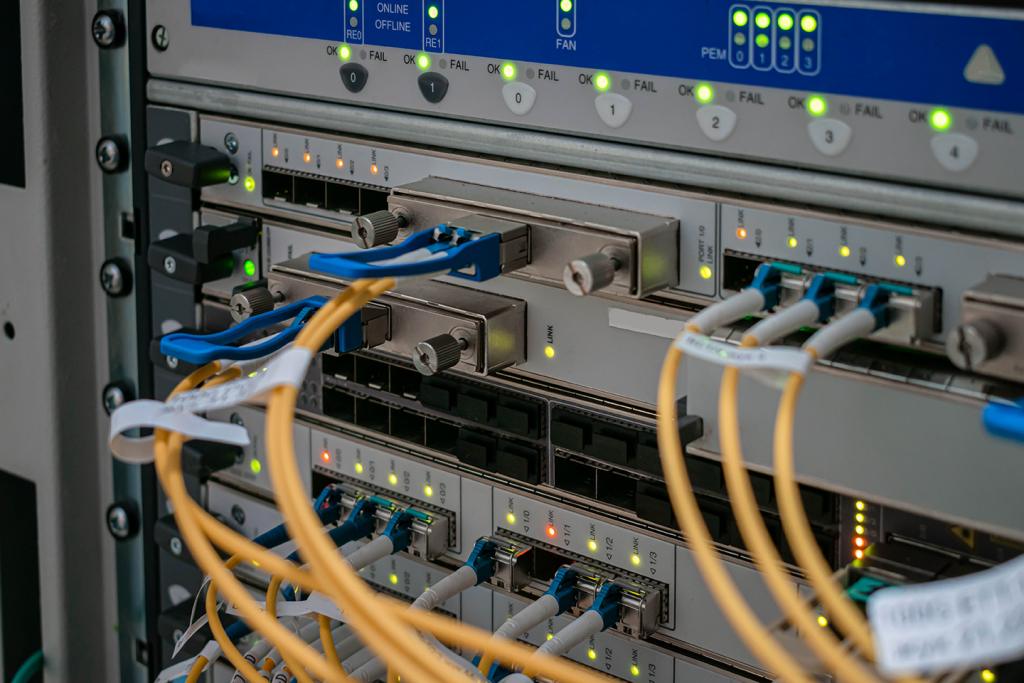In the ever-evolving landscape of telecommunications, staying ahead of the curve is crucial for maintaining a competitive edge. One of the key components that has been revolutionising this industry is the optical transceiver. As we delve into the world of optical transceivers, we’ll explore their working principles, their significant benefits for telecommunication networks, and why you don’t need to break the bank by purchasing them directly from the manufacturer. Particularly, we’ll focus on the latest advancement in this technology: the 400G optical transceivers.
Understanding Optical Transceivers
Optical transceivers are critical devices in modern telecommunications, responsible for transmitting and receiving data over optical fiber. These small, modular devices convert electrical signals into optical signals and vice versa, facilitating high-speed data communication over long distances.
How Optical Transceivers Work
Optical transceivers consist of a transmitter and a receiver, each serving a distinct purpose:
Transmitter: This component converts electrical signals from network devices into optical signals. A laser diode is typically used to generate the light required for optical transmission.
Receiver: On the other end, the receiver converts incoming optical signals back into electrical signals. A photodiode detects the light and transforms it into an electrical signal that network devices can process.
The efficiency and reliability of this conversion process are what make optical transceivers indispensable in modern data communication.
The Leap to 400G Technology
The latest breakthrough in optical transceivers is the 400G technology, a significant upgrade from previous generations such as 100G and 200G. This advancement brings several key benefits to telecommunication networks:
Increased Bandwidth and Speed
400G transceivers offer quadruple the bandwidth of 100G transceivers, allowing for faster data transfer and greater network capacity. This is essential for supporting the growing demand for high-speed internet, video streaming, cloud services, and other bandwidth-intensive applications.
Enhanced Efficiency
With 400G technology, network operators can achieve higher data rates without a proportional increase in power consumption. This efficiency translates to lower operational costs and a reduced carbon footprint, aligning with the industry’s move towards greener technologies.
Scalability and Flexibility
400G transceivers are designed to be highly scalable, enabling network operators to expand their infrastructure seamlessly as demand grows. They also offer flexibility in terms of deployment, as they can be used in various configurations and support different network architectures.
The Cost Advantage: Why Pay More?
One of the common misconceptions in the industry is that optical transceivers must be purchased directly from the original equipment manufacturer (OEM). While OEM transceivers are of high quality, they often come with a hefty price tag. However, there are cost-effective alternatives available that do not compromise on performance or reliability.
Quality and Compatibility
Third-party optical transceivers, like those offered by Carritech, are fully compatible with major OEM equipment and meet the same stringent standards. These transceivers undergo rigorous testing to ensure they deliver the same level of performance and reliability as their OEM counterparts.
Significant Cost Savings
By opting for third-party transceivers, network operators can achieve substantial cost savings. These savings can then be reinvested into other critical areas of the business, such as infrastructure expansion, technology upgrades, or enhancing service offerings.
Vendor Independence
Sourcing transceivers from third-party providers also reduces dependence on a single manufacturer. This vendor independence can lead to better pricing, more flexible terms, and improved supply chain resilience.
Conclusion
As telecommunication networks continue to evolve, embracing the latest technologies like 400G optical transceivers is essential for staying competitive. These advanced transceivers offer unparalleled speed, efficiency, and scalability, making them a cornerstone of modern data communication.
Moreover, by choosing quality third-party transceivers from providers like Carritech, network operators can enjoy significant cost savings without sacrificing performance. This smart approach allows for greater financial flexibility and supports the ongoing innovation required to meet the growing demands of the digital age.
Explore Carritech’s range of optical transceivers and discover how you can enhance your network’s capabilities while optimising your budget. Contact us today to learn more about our products and how we can support your telecommunication needs.

